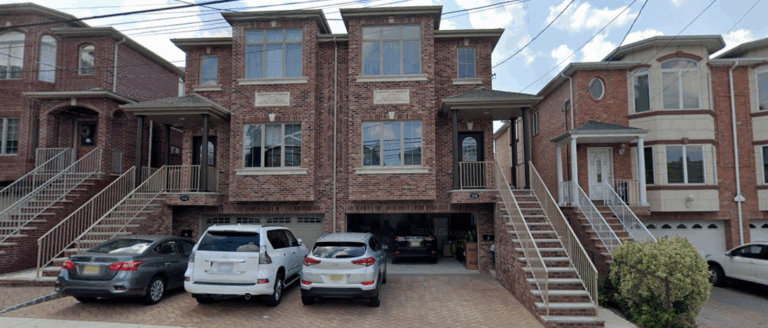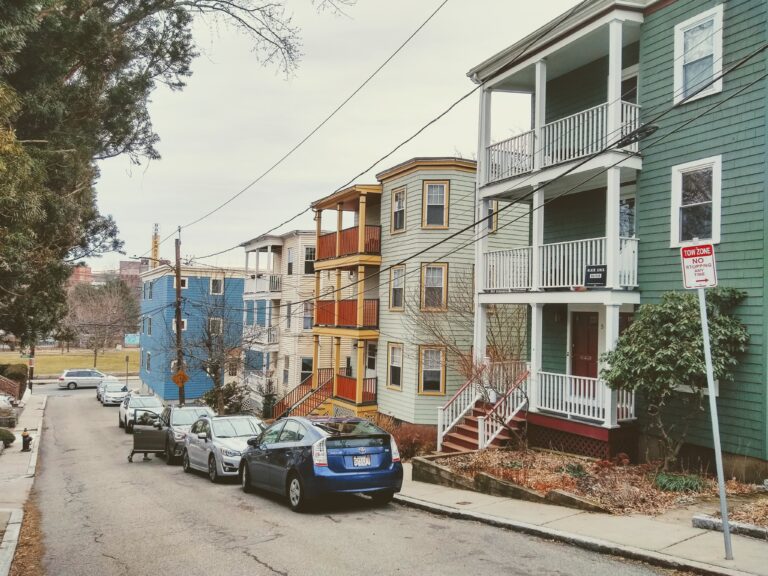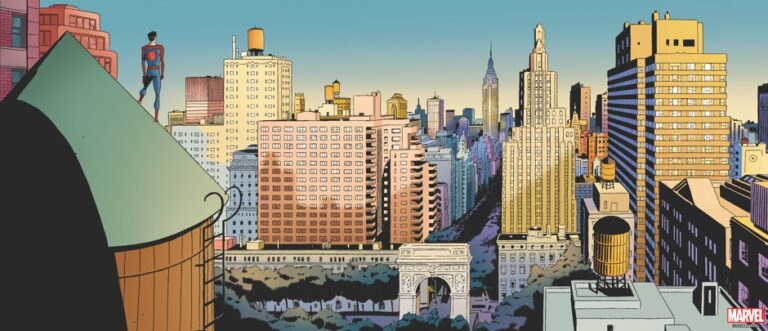Physical Address
304 North Cardinal St.
Dorchester Center, MA 02124
Physical Address
304 North Cardinal St.
Dorchester Center, MA 02124
Arlington County policymakers have issued a call for ideas on improving housing availability and affordability. If you’d like to submit your own ideas, you can do so here through the rest of the day. The ideas that I submitted are below. Arlington County is a national model for transit-oriented development. Permitting dense, multifamily housing to be built on the County’s transit corridors has contributed to making the Washington, DC region more affordable compared to other high-income coastal regions. Nonetheless, housing prices in Arlington are high and rising due to increasing demand for access to the job market, schools, and other benefits that Arlington offers. County policymakers have opportunities to reform land use regulations to permit both dense multifamily housing and missing middle housing to improve access to Arlington’s opportunities. Zoning for Transit Oriented Development Ahead of Metro’s arrival in Arlington, county policymakers adopted the well-known “bulls eye approach” to planning, which calls for dense development surrounding the Rosslyn-Ballston corridor Metro stations. This plan calls for dense development to be permitted within one-quarter mile of these stations. Unfortunately, this plan has never been realized in the zoning ordinance. The County maintains single-family or townhouse zoning within one-quarter mile of four stations on this corridor and a relatively low-density multifamily zone within one-quarter mile of the Rosslyn station. The County needs more townhouses and low-rise multifamily housing, but it also needs more high-rise multifamily housing as the bulls eye plan recognized. Given the high and rising land values and house prices along this corridor, it’s past time to realize this decades-old planning objective. Further, planning for urban villages around Metro stations should be extended to the area around the East Falls Church station area, where residents of multifamily housing have to walk past land zoned exclusively for single-family houses to reach the […]
A stickplex is a dense residential structure or group of structures built with inexpensive materials and techniques, most commonly wood. Stickplexes use 2,500 square feet of land per unit or less. Stickplexes have per-square-foot construction costs roughly in line with detached houses due to avoidance of costly features like elevators and more expensive construction methods. This type of housing includes features of both multifamily housing and single-family housing. They economize on land while avoiding the high construction costs of large multifamily buildings. Relative to high-rise housing, stickplexes can cost one-third less to build on a per-square-foot basis. And because they use a relatively small amount of land per unit, their land costs are lower than the typical detached house’s land costs. Stickplexes versus missing middle Daniel Parolek coined the term “missing middle” and emphasizes that missing middle “is compatible in scale with single-family homes.” He advises caution about permitting three-story buildings, while a stickplex can be three stories or taller. A duplex on a 6,000 square foot lot would fit the definition of missing middle. But it would not be a stickplex since it would use more than 3,000 square feet of land per unit. Missing middle housing has found traction politically. Policymakers who have passed zoning reforms from Oregon to Nebraska to Durham have used the term to describe the type of construction they would like to see. Minneapolis Council Member Lisa Goodman described the city’s reform to permit triplexes in language similar to Parolek’s: “I like to refer to it as, ‘the box can’t change,” she said. “All that can change is how many families can live within the existing box.” However, in Minneapolis, questions remain about how feasible triplexes will be to build in permitted building envelopes. Zoning rules, including floor area ratio limits of less than one […]

In two previous posts, I’ve raised questions about the competitiveness of missing middle housing. This post is more petty: I want to challenge the design rigidities that Daniel Parolek promotes in Missing Middle Housing. Although petty, it’s not irrelevant, because Parolek recommends that cities regulate to match his design goals, and such regulations could stifle some of the most successful contemporary infill growth. Parolek’s book suffers from his demands that missing middle housing match his own tastes. For instance, he has a (Western?) bias against three-story buildings. Having grown up in the Northeast, I think of three stories as the normal and appropriate height for a house. To each his own – but Parolek’s constant insistence on this point offers aid to neighborhood defenders who will be happy to quote him to make sure three-story middle housing remains missing. The house in the doghouse No form is in Parolek’s doghouse as much as the “tuck-under” townhouse, an attached house with a garage on the first floor. This is clearly a building that builders and buyers love: “If your regulations do not explicitly prohibit it, it will be what most builders will build” (p. 140). In fact, tuck-under townhouses are probably the most successful middle housing type around. In lightly-regulated Houston, builders small and large have been building townhouses, sometimes on courtyards perpendicular to the road. Parking is tucked. Townhouses are usually three stories tall (bad!), sometimes four. A few are even five stories. Their courtyards are driveways (also bad!). In a very different context – Palisades Park, NJ – tuck-under duplexes are everywhere. Their garages are excessive thanks to high parking minimums, but the form has been very successful nonetheless. These examples are not to be dismissed lightly: these are some of the only cases where widespread middle housing is […]

In yesterday’s post, I showed that missing middle housing, as celebrated in Daniel Parolek’s new book, may be stuck in the middle, too balanced to compete with single family housing on the one hand and multifamily on the other. But what about all the disadvantages that middle housing faces? Aren’t those cost disadvantages just the result of unfair regulations and financing? Indeed, structures of three or more units are subject to a stricter fire code. It’s costly to set up a condo or homeowners’ association. Small-scale infill builders don’t have economies of scale. Those, and the other barriers to middle housing that Parolek lays out in Chapter 4, seem inherent or reasonable rather than unfair. In particular, most middle housing types cannot, if all units are owner-occupied, use a brilliant legal tradition known as “fee simple” ownership. Fee simple is the most common form of ownership in the Anglosphere and it facilitates clarity in transactions, chain of title, and maintenance. Urbanists should especially favor fee simple ownership of most city parcels because it facilitates redevelopment. Consider a six-plex condominium nearing the end of its useful life: to demolish and redevelop the site requires bringing six owners to agreement on the terms and timing of redevelopment. A single-owner building can be bought in a single arms-length transaction. It’s no coincidence that the type of middle housing with the greatest success in recent years – townhomes – can be occupied by fee-simple owners, combining the advantages of owner-occupancy with the advantages of the fee simple legal tradition. Many middle housing forms enjoy their own structural advantage: one unit is frequently the home of the (fee simple) owner. By occupying one unit, a purchaser can also access much lower interest rates than a non-resident landlord. (This is thanks to FHA insurance, as Parolek […]

Everybody loves missing middle housing! What’s not to like? It consists of neighborly, often attractive homes that fit in equally well in Rumford, Maine, and Queens, New York. Missing middle housing types have character and personality. They’re often affordable and vintage. Daniel Parolek’s new book Missing Middle Housing expounds the concept (which he coined), collecting in one place the arguments for missing middle housing, many examples, and several emblematic case studies. The entire book is beautifully illustrated and enjoyable to read, despite its ample technical details. Missing Middle Housing is targeted to people who know how to read a pro forma and a zoning code. But there’s interest beyond the home-building industry. Several states and cities have rewritten codes to encourage middle housing. Portland’s RIP draws heavily on Parolek’s ideas. In Maryland, I testified warmly about the benefits of middle housing. I came to Missing Middle Housing with very favorable views of missing middle housing. Now I’m not so sure. Parolek’s case for middle housing relies so much on aesthetics and regulation that it makes me wonder whether middle housing deserves all the love it’s currently getting from the YIMBY movement. Can middle housing compete? Throughout the book, Parolek makes the case that missing middle construction cannot compete, financially, with either single-family or multifamily construction. That’s quite contrary to what I’ve read elsewhere. In a chapter called “The Missing Middle Housing Affordability Solution”, Daniel Parolek and chapter co-author Karen Parolek write: The economic benefits of Missing Middle Housing are only possible in areas where land is not already zoned for large, multiunit buildings, which will drive land prices up to the point that Missing Middle Housing will not be economically viable. (p. 56) On page 81, we learn, It’s a fact that building larger buildings, say a 125-150 unit apartment […]

Nolan Gray plunges into the Sam Raimi "Spider-Man" trilogy to uncover the housing problems (and solutions) of expensive cities like New York.
Jeremiah Moss, a New York blogger, just wrote a long article complaining about the bad habits of his new neighbors in the East Village. I suspect many, if not most readers, of his article would think: maybe we need to zone out new housing to keep out the yuppies! But it seems to me that this conclusion would be wrong. Here’s why: new buildings in the East Village are generally more expensive than old buildings.* So I suspect that if yuppies are moving into old buildings like Moss’s, it is probably because they cannot afford newer buildings, or more affluent neighborhoods like Tribeca. It logically follows that if more new buildings were allowed in Moss’s neighborhood, he would have less affluent neighbors, which presumably would make him happier. *I searched listings at streeteasy.com, and found that of about 170 pre-war one-bedrooms, 77 of them (or 45 percent) rented for less than $3000 per month. By contrast, of the 32 postwar one-bedrooms in the East Village, only 3 rent for under $3000.
One common argument against new housing is that it will turn “[neighborhood at issue] into Dubai.” Evidently, some people think Dubai is a hellscape of super-dense skyscapers. In fact, Many Dubai neighborhoods aren’t very dense at all. There is one Dubai neighborhood that is more dense than most urban neighborhoods in North America: Ayal Nasir (which has about 200,000 people per square mile). But it looks far more like Paris than the popular stereotype of Dubai: streets are narrow, and most buildings are five or so stories high. The neighborhood next door, Al Murar, has 130,000 people per square mile and has a similarly human-scale urban fabric.
In my email box today, I received a message from an anti-housing group, touting a study from the localize.city website* on sunlight on New York neighborhoods. The purpose of the study is to show which neighborhoods have the least sunlight. The study found that 27 of the city’s allegedly darkest neighborhoods are in Manhattan. More interestingly, the list of most sunlight-deprived Manhattan neighborhoods includes some of the city’s richest areas: Midtown, the Financial District, Tribeca, Upper East Side, and the Upper West Side. By contrast, the list of Manhattan’s ten sunniest areas include not only a few well off areas (like Hudson Yards and Battery Park City) but less pricey areas like Marble Hill and Inwood. Why does this matter? My interpretation of these facts is that people who can afford to live anywhere don’t really care very much about an extra hour or two of sunlight, which in turn suggests that sunlight is basically just an excuse to block new housing rather than something people actually care about in other contexts. To put the matter another way, New Yorkers may actually value shade over sunlight, if they care about the issue at all. *I note that if you really do care about sunlight more than I am suggesting that most people do, you can search an individual address at the Localize website.
Even the most supposedly reputable mainstream media is often less than careful in its coverage of housing issues. For example, a few weeks ago the New York Times ran an article on the Upper East Side’s Yorkville neighborhood, implying that high-rises are “erasing their community’s character.” The article implies that Yorkville is a quaint little brownstone neighborhood. But in fact, even the most casual perusal of real estate websites would show that Yorkville has been a high-rise area for many years. I ran a search on Streeteasy.com showing 259 for sale apartments with doormen (a feature generally found only in high- and mid-rise buildings). Only 27 of these housing units were built after 2010, which means that hundreds of high-rise units were built long ago.* So the entire story is based on falsehood. Moreover, even if Yorkville’s towers were new, I am not sure that its pre-high-rise character is particularly unique. To me Yorkville’s tenements look just like similar tenements elsewhere in Manhattan. If you can’t trust what the Times says about the Upper East Side, how can you trust what it says about climate change or Washington politics? *I did not search for-rent apartments because Streeteasy’s software does not allow users to separate for-rent units by age.